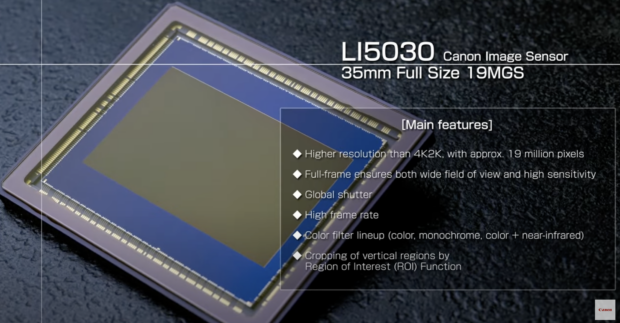Canon has made a significant breakthrough in sensor technology with the release of the LI5030SA CMOS sensor. This full frame global shutter sensor boasts an impressive 19 megapixels and 12-bit readout, opening up new possibilities for high-speed imaging applications.
Global Shutter Advantage
The key feature of the LI5030SA sensor is its global shutter function. Unlike conventional rolling shutter sensors, which expose pixels row by row, a global shutter exposes all pixels simultaneously. This eliminates the distortion and artifacts commonly associated with capturing fast-moving objects or using electronic shutters.
With the LI5030SA, photographers and videographers can accurately capture the shape and motion of high-speed subjects without the need for complex post-processing or correction techniques. This makes it ideal for applications such as sports photography, scientific imaging, and industrial inspection.
High-Resolution Video Capabilities
The LI5030SA sensor is capable of outputting an effective 5688 x 3334 pixels of video at 57.99 frames per second (fps) with 12-bit color depth via 24 channels of digital signal output. This translates to a stunning 5.7K resolution at nearly 60 fps, providing incredible detail and clarity for video recording.
For those seeking even higher frame rates, the sensor can achieve 5.7K at 3.2K resolution (3200 pixels vertically) at 60 fps. This opens up the possibility of oversampling 4K video, resulting in superior image quality and reduced noise.
Versatile Sensor Variants
Canon offers the LI5030SA sensor in four different variants to cater to various imaging needs:
- LI5030SAC (color): Equipped with a color filter array for capturing full-color images.
- LI5030SAI (RGBIR): Includes an RGBIR filter for capturing visible light and near-infrared wavelengths.
- LI5030SAM (monochrome): Optimized for monochrome imaging, delivering higher sensitivity and resolution.
- LI5030SAN (naked): Lacks a micro lens or color filter, allowing for custom filter integration or specialized applications.
Impressive Specifications
The LI5030SA sensor boasts a full frame 35mm equivalent recording screen size of 42.12 mm x 32.64 mm, with a pixel size of 6.4 μm x 6.4 μm. It offers analog gain settings of 0dB, 6dB, 12dB, and 18dB, and has a typical saturation of 20,000 electrons.
The sensor’s sensitivity varies depending on the variant, with the color and RGBIR versions achieving around 80,000 e/lx/sec for green pixels, while the monochrome and naked variants offer 170,000 e/lx/sec and 30,000 e/lx/sec, respectively.
Dark random noise is kept low at 1.8 erms, and dark current is 28 e/sec, both measured at an analog gain of 18dB and a temperature of 60°C. The sensor consumes approximately 2400 mW when operating at 57.99 fps for full-area readout.
Future Implications
While the LI5030SA sensor is a significant achievement, it is not yet ready for integration into Canon’s consumer cameras. The absence of dual pixel autofocus and the 12-bit readout, which may result in reduced dynamic range, are factors that need to be addressed.
However, the release of this sensor demonstrates Canon’s commitment to pushing the boundaries of imaging technology. It opens up new possibilities for industrial, scientific, and specialized imaging applications where global shutter capabilities are essential.
As Canon continues to refine and improve upon this technology, we can expect to see global shutter sensors making their way into future generations of Canon cameras, offering photographers and videographers even greater creative freedom and performance.
